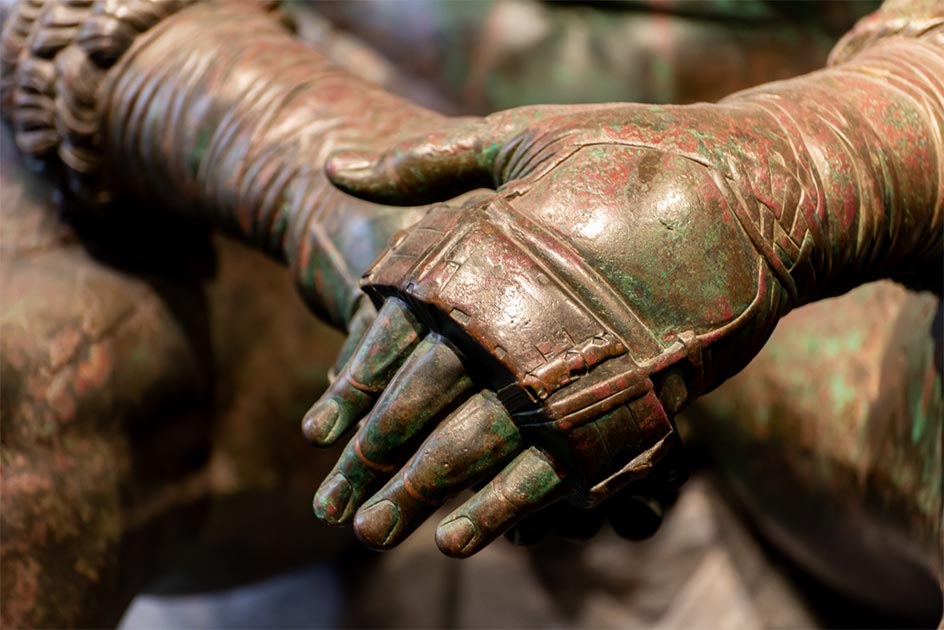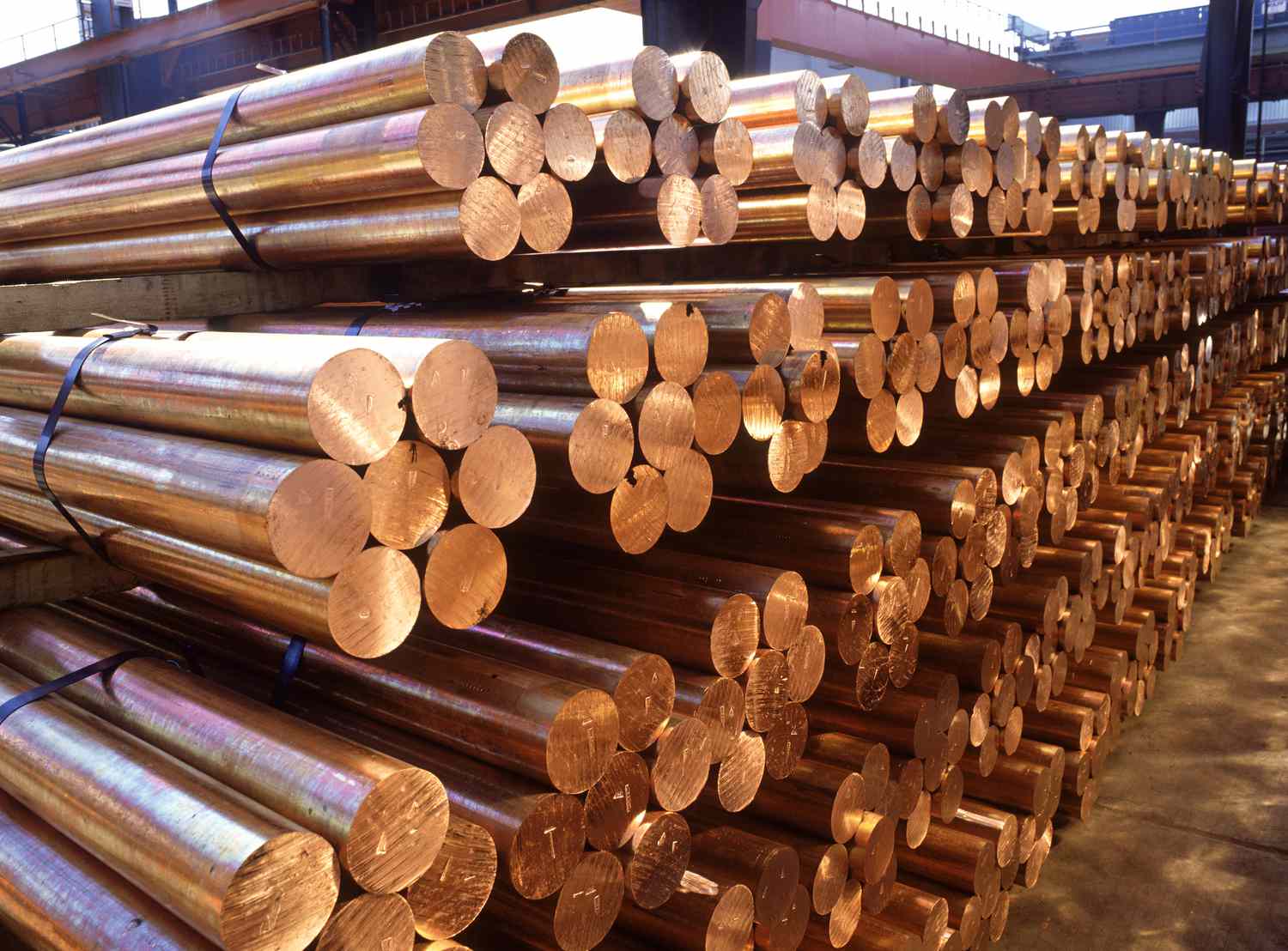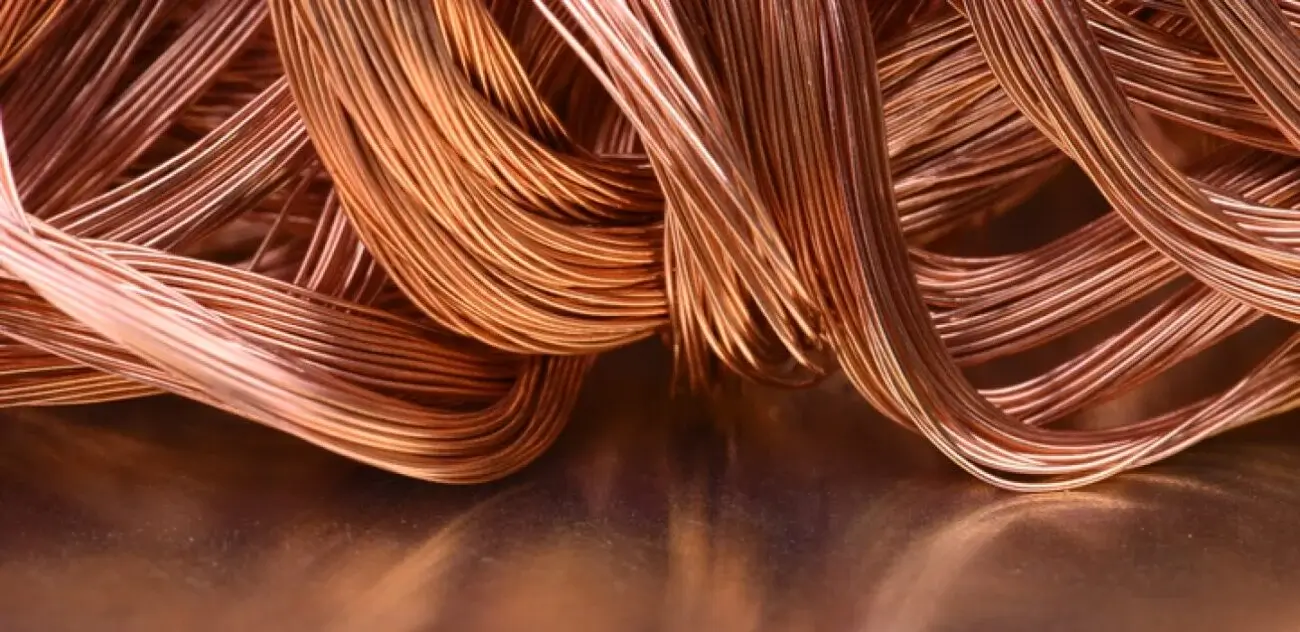An alloy of copper and tin is commonly known as bronze. Bronze is one of the earliest alloys created by humans, dating back to around 3500 BC. It is formed by combining copper, which is a malleable and ductile metal, with tin, which adds hardness and strength to the mixture. The exact composition of bronze can vary, but it typically contains around 80-90% copper and 10-20% tin, although other elements like aluminum, phosphorus, and silicon may also be included in certain formulations to enhance specific properties. At the same time C17500 copper is known for its excellent electrical conductivity, making it a preferred material for electrical connectors and conductive components.
Bronze has been widely utilized throughout history for its exceptional properties. Its hardness, corrosion resistance, and ability to hold fine details when cast make it suitable for a variety of applications. Bronze is commonly used in the production of sculptures, statues, and artistic objects due to its aesthetic appeal and durability. It has also been employed for making musical instruments like bells, cymbals, and brass instruments due to its resonance and tonal qualities. Additionally, bronze is suitable for bearings, bushings, and gears in machinery, thanks to its low friction properties and wear resistance. Its resistance to corrosion in marine environments has made it valuable for ship fittings and underwater equipment. Overall, bronze is a versatile alloy with a rich history and a wide range of practical applications.
Copper and Tin Alloy: A Dynamic Duo

Copper and Tin Alloy: A Dynamic Duo
Copper and tin alloy, often referred to as bronze, represents a dynamic duo in the world of metallurgy and materials science. This alloy combines the best of both worlds, harnessing the unique properties of both copper and tin to create a material that is greater than the sum of its parts. Copper, with its excellent electrical conductivity and malleability, provides the foundation for bronze, while tin introduces hardness and corrosion resistance. This dynamic synergy has resulted in a material that has played a pivotal role in human history.
Bronze has been instrumental in various aspects of human civilization. It served as a technological breakthrough in the Bronze Age, allowing for the creation of tools, weapons, and artistic works that were previously unattainable with simple copper. Its hardness and durability made it a valuable choice for early civilizations, enabling the production of tools that could till soil, construct buildings, and defend against enemies. Bronze also facilitated the creation of exquisite sculptures, monuments, and artifacts that continue to be admired today for their beauty and craftsmanship.
In modern times, copper and tin alloys are still highly relevant. They find applications in a wide range of industries, from aerospace and automotive engineering to marine and musical instrument manufacturing. The dynamic duo of copper and tin alloy continues to be a testament to the ingenuity of human craftsmanship and the enduring legacy of materials science, providing us with materials that are not only functional but also artistically and technologically significant.
Composition and Properties of Copper-Tin Alloys
Copper-tin alloys, commonly known as bronzes, are a diverse group of materials with various compositions and properties, offering a wide range of applications. The composition of copper-tin alloys can vary significantly depending on the specific requirements of the intended use. However, as a general guideline, bronze typically contains around 80-90% copper and 10-20% tin. This composition provides a good balance of the unique properties of both metals.
The properties of copper-tin alloys are influenced by their composition. The addition of tin to copper imparts several beneficial characteristics, including increased hardness, improved wear resistance, and enhanced corrosion resistance. Bronze is known for its attractive golden-brown color, making it popular for artistic and decorative applications. Depending on the exact composition, bronzes can range from relatively soft and easily worked to much harder and suitable for applications requiring high mechanical strength, such as bearings, bushings, and gears. Additionally, bronzes exhibit good thermal conductivity, making them suitable for heat exchangers and electrical conductivity for certain electrical components.
The composition and properties of copper-tin alloys, or bronzes, can be tailored to meet specific requirements across various industries. Whether it’s the artistic appeal of sculptures, the durability of bearings, or the conductivity of electrical components, bronzes continue to play a vital role in modern engineering and craftsmanship due to their versatility and unique blend of properties.
The Birth of Bronze: Historical Significance

The Birth of Bronze: Historical Significance
The birth of bronze holds immense historical significance as it marked a pivotal moment in human technological advancement and cultural development. Bronze, an alloy primarily composed of copper and tin, emerged during the Bronze Age, which spanned from around 3300 BCE to 1200 BCE in different parts of the world. This transition from the preceding Stone Age had a profound impact on human societies for several key reasons.
Firstly, the invention of bronze metallurgy represented a major leap forward in materials science. Bronze is significantly harder and more durable than pure copper, which allowed for the creation of tools, weapons, and agricultural implements of far superior quality and efficiency. This technological leap transformed agriculture, architecture, and warfare, leading to more productive farming, advanced construction techniques, and enhanced military capabilities.
Secondly, the birth of bronze had a profound impact on art and culture. The newfound ability to cast and shape bronze allowed for the creation of intricate sculptures, statues, and decorative objects. Bronze artifacts from the ancient world, such as the famous bronze sculptures of Greece or the Shang Dynasty in China, still captivate us today with their artistry and craftsmanship. This marked the beginning of artistic expression through metallurgy, leaving a lasting legacy in the world of art and culture.
The development of bronze during the Bronze Age was a turning point in human history. It revolutionized technology, enabling more efficient and sophisticated tools and weaponry, while also fostering artistic and cultural expression. The birth of bronze remains a testament to human ingenuity and innovation, demonstrating how the mastery of materials can shape the course of civilizations.
Varieties of Copper-Tin Alloys
Copper-tin alloys, commonly referred to as bronzes, come in a variety of compositions, each tailored to specific applications and requirements. Here are a few notable varieties of copper-tin alloys:
- Phosphor Bronze: This alloy contains copper, tin, and phosphorus, and sometimes additional elements like zinc or lead. Phosphor bronze is known for its excellent corrosion resistance and high fatigue strength, making it ideal for electrical connectors, springs, and marine applications due to its resistance to seawater corrosion.
- Aluminum Bronze: Aluminum bronze is an alloy of copper and aluminum, with some variations including small amounts of iron and nickel. It offers excellent corrosion resistance, particularly in aggressive environments, such as those with chemicals or saltwater exposure. It is often used for pump and valve components, ship propellers, and corrosion-resistant equipment.
- Silicon Bronze: Silicon bronze combines copper with silicon, and occasionally small amounts of manganese, zinc, or aluminum. It is favored for its high strength, good electrical conductivity, and resistance to corrosion. This alloy is commonly used in architectural applications, such as fasteners, hardware, and decorative elements.
- Gunmetal: Gunmetal is an alloy composed of copper, tin, and zinc. It is known for its self-lubricating properties, which make it suitable for bearings and bushings. Gunmetal is often used in the manufacture of small arms, hence the name, and is valued for its low friction and wear resistance.
- Phosphorized Copper: This alloy consists of copper with a small amount of tin and phosphorus. Phosphorized copper is highly resistant to dezincification and is primarily used in plumbing and water distribution systems for fittings and valves.
These various copper-tin alloys are tailored to meet specific requirements in terms of mechanical properties, corrosion resistance, electrical conductivity, and other factors. Their versatility and adaptability have made them indispensable materials across a wide range of industries and applications, from engineering and manufacturing to art and architecture.
Strength and Durability: Key Characteristics

Strength and Durability: Key Characteristics
Strength and durability are two key characteristics that often determine the performance and longevity of materials in various applications. These properties are essential considerations in fields such as engineering, construction, manufacturing, and product design.
Strength refers to a material’s ability to withstand an applied force without failing or breaking. It is typically measured in units like megapascals (MPa) or newtons per square millimeter (N/mm²). High-strength materials can carry heavy loads, resist deformation, and endure mechanical stress without undergoing permanent damage. Different types of strength include tensile strength (resistance to stretching or pulling), compressive strength (resistance to squeezing or crushing), and shear strength (resistance to sliding forces).
Durability, on the other hand, relates to a material’s ability to withstand various environmental factors and conditions over an extended period without degradation. This encompasses resistance to wear, corrosion, fatigue, and other forms of deterioration. Durability is crucial in ensuring the long-term performance and reliability of materials, especially in applications where maintenance or replacement is costly or impractical.
Balancing strength and durability is often a critical design consideration. Materials that are exceptionally strong may not necessarily be highly durable, and vice versa. Achieving the right balance depends on the specific requirements of the application. For example, in structural engineering, concrete is often used for its durability in resisting environmental factors like moisture and chemical exposure, while steel is chosen for its exceptional tensile strength to withstand heavy loads. In product design, engineers and designers must carefully select materials that align with the intended use, taking into account both strength and durability to ensure the reliability and safety of the end product.
Bronze Alloys in Architecture and Construction
Bronze alloys have a rich history in architecture and construction, and they continue to be utilized in modern building projects for their unique combination of aesthetic appeal, durability, and corrosion resistance. Here are some key ways in which bronze alloys have been and are still used in architecture and construction:
- Architectural Details: Bronze has been a favored material for ornamental and decorative elements in architecture for centuries. Its distinctive golden-brown hue and ability to hold fine details when cast make it suitable for features like door hardware, railings, balusters, and decorative grilles. Bronze elements provide buildings with a touch of elegance and a timeless aesthetic.
- Statuary and Sculptures: Bronze’s malleability and ability to capture intricate details have made it a preferred material for creating sculptures and statues that adorn public spaces, parks, and building facades. Famous bronze sculptures, such as the Statue of Liberty in the United States or the Manneken Pis in Brussels, serve as iconic landmarks and cultural symbols.
- Roofing and Cladding: Bronze has been used as a roofing material in architectural applications, often in the form of copper-tin alloy sheets. Over time, these sheets develop a distinctive greenish patina, which adds character to the building while protecting it from the elements. Additionally, bronze can be used for cladding and facade panels due to its resistance to corrosion and aesthetic appeal.
- Structural Components: While less common than steel or concrete in structural applications, bronze can be used for certain structural components, particularly in historic or heritage restoration projects. Its strength and durability make it suitable for beams, columns, and connectors in situations where its unique properties are valued.
Bronze alloys have a long and storied history in architecture and construction, primarily due to their combination of functional and aesthetic qualities. As modern construction practices continue to evolve, bronze remains a relevant choice for projects that demand a touch of elegance, longevity, and resistance to corrosion. Whether used for decorative embellishments, structural elements, or roofing, bronze alloys contribute to the enduring beauty and durability of architectural landmarks around the world.
Marine and Nautical Applications

Marine and Nautical Applications
Bronze alloys, particularly those containing copper and tin, have a long history of use in marine and nautical applications due to their exceptional resistance to corrosion in marine environments and their mechanical properties. Here are some key marine and nautical applications where bronze alloys are commonly utilized:
Ship Propellers and Fittings: Bronze alloys are widely used for manufacturing ship propellers, as they can withstand the corrosive effects of seawater and provide excellent strength and durability. The ability of bronze to maintain its mechanical properties in underwater conditions makes it an ideal choice for various ship fittings, including rudders, shafts, and valves.
Marine Hardware: Bronze’s resistance to corrosion makes it a preferred material for various marine hardware components such as cleats, anchors, winches, and pulleys. These components are subjected to harsh saltwater conditions, and bronze’s longevity and corrosion resistance ensure the safety and reliability of maritime equipment.
Navigation and Communication Equipment: Many marine navigation and communication systems rely on bronze components due to their electrical conductivity and corrosion resistance. Antennas, connectors, and other critical equipment on ships and boats often contain bronze to ensure reliable performance.
Subsea and Underwater Equipment: In addition to surface vessels, bronze alloys are also used in the construction of subsea and underwater equipment. Submersible vehicles, offshore oil and gas infrastructure, and underwater sensors benefit from bronze’s resistance to corrosion and ability to withstand high-pressure, corrosive environments.
Nautical Decor and Art: Beyond functional applications, bronze’s aesthetic appeal has led to its use in nautical decor and art. Bronze sculptures, plaques, and other decorative elements are commonly found in maritime-themed settings, adding a touch of elegance and historical significance.
In conclusion, bronze alloys are a staple in marine and nautical applications due to their unique combination of corrosion resistance, strength, and durability. Whether beneath the water’s surface or on the decks of ships, bronze plays a vital role in ensuring the reliability and longevity of equipment and structures in the maritime industry.
Industrial and Manufacturing Applications
Bronze alloys are highly valued in a wide range of industrial and manufacturing applications due to their exceptional mechanical properties and resistance to corrosion. These alloys are frequently employed in the production of bearings and bushings, where their low friction and excellent wear resistance contribute to the reliable performance of machinery, including automotive engines and industrial equipment.
Another common application of bronze alloys is in the manufacturing of gears and worm wheels, crucial components in various machinery, such as manufacturing equipment, elevators, and industrial robotics. The durability and high load-bearing capacity of bronze make it an ideal choice for these critical parts.
Bronze’s corrosion resistance and ability to maintain mechanical integrity in harsh environments make it a preferred material for valves, fittings, and fluid-handling components in chemical plants, petrochemical facilities, and water treatment plants. Additionally, its excellent electrical conductivity and resistance to corrosion make bronze suitable for electrical connectors and terminals in industrial equipment, power distribution systems, and electronics manufacturing.
Furthermore, bronze alloys are utilized in die-casting and molding processes, enabling the production of intricate industrial parts and components with precision. Their high fluidity when molten makes them invaluable in manufacturing parts for automotive, aerospace, and industrial equipment. Moreover, certain bronze alloys, such as silicon bronze, serve as welding consumables, creating strong and durable joints in the manufacturing of various metal assemblies and structures. Overall, bronze alloys play a pivotal role in enhancing the efficiency, reliability, and durability of industrial and manufacturing operations across diverse sectors.
REFERENCES:
Northover, J. P. (1989). Properties and use of arsenic-copper alloys. Old world archaeometallurgy, 111-118.
Craddock, P. T. (1978). The composition of the copper alloys used by the Greek, Etruscan and Roman civilizations: 3. The origins and early use of brass. Journal of Archaeological Science, 5(1), 1-16.
Cribb, W. R., & Grensing, F. C. (2011). Spinodal copper alloy C72900–new high strength antifriction alloy system. Canadian Metallurgical Quarterly, 50(3), 232-239.

